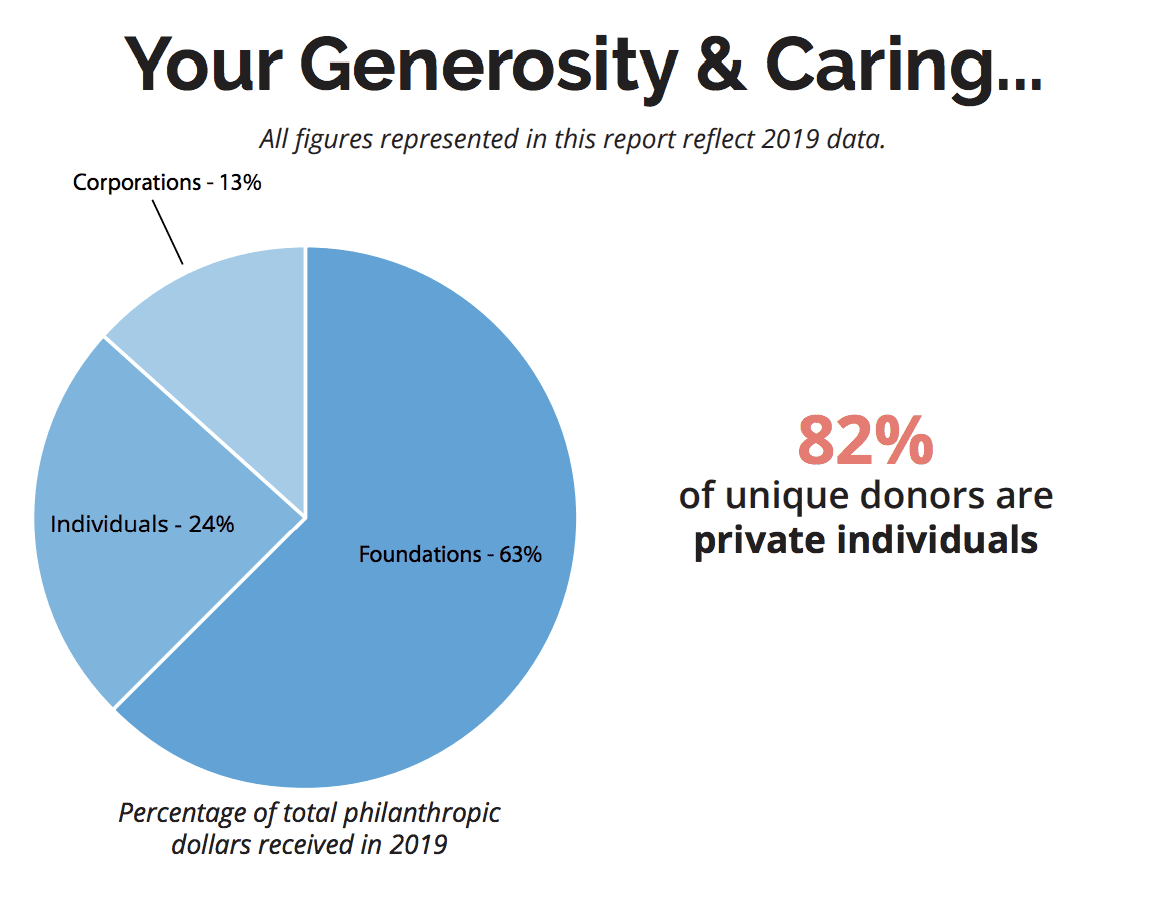Nonprofit Appeal Letters: 11 Easy Steps + Template
- How to write a successful nonprofit appeal letter
- Step 1: Tell a story
- Step 2: Create a sense of urgency
- Set a timeline
- Be clear about your needs
- Use time-sensitive language
- Incorporate a matching campaign
- Create scarcity
- Step 3: Be specific
- Step 4: Personalize the appeal
- Step 5: Create a sense of identity
- Step 6: Choose a theme
- Step 7: Use social proof
- Step 8: Consider the channel
- Step 9: Have a clear call to action
- Step 10: Thank your donors
- Step 11: Find a strategic partner
- Nonprofit Appeal Letter Template
- Nonprofit Appeal Letter FAQs
Picture a potential donor scrolling through Facebook. We’ll call her Linda.
Linda is a middle-aged woman who cares deeply about social issues and her local community. While she typically donates to several different charities throughout the holiday season, her budget is tight this year and her attention is limited. How can your nonprofit organization create a message compelling enough to capture Linda’s attention and convince her that she should spend some of her hard-earned money on your charity?
With over 1.5 million registered nonprofits in just the U.S., taking the time to develop your message and unique viewpoint is vital all year round. However, it’s especially important during the holiday season. Nearly one-third of annual giving happens in December alone.
That’s why it’s essential that your appeal letter stands out from the rest. There’s a brief window for your message to have the maximal impact, and you’re competing not just with other nonprofits but with everything else in Linda’s life: home, work, the holiday season, etc.

How to write a successful nonprofit appeal letter
While nonprofit appeal letters are not one-size fits all, we’ve put together 11 steps you can take to make your messaging more effective during the holiday season and year-round. The more you combine these techniques, the better the chance that your appeals will hit potential donors in just the right way at just the right time.
Ready to jump right into writing? Click to scroll down to our handy template and get started.
Step 1: Tell a story
While having a clearly defined mission in your messaging is important, you have to tell a story. You have to prove to Linda that her donation can make a real difference. Tell a story of how your nonprofit has been able to accomplish its mission.
For example, while working with Metropolitan Ministries to craft their holiday messaging and campaign, we found that focusing on the stories of the real-life families Metro serves played a key role in engaging potential donors. (Read the entire case study on how we exceeded their holiday giving goals by 10% here).
When telling a story, distill it down to the basics — the character (this can be a person or family), their struggle, and how your audience’s donations will help them overcome that struggle.
What does that look like in practice?
- An email that tells the story of how one single mother, borderline homeless and struggling to make ends meet, was able to find food and shelter with your organization.
- A Facebook ad that shows a hungry child and says that you can give her family a holiday meal this year.
- A website page that shows 100,000 meals were served to families on Thanksgiving.
While that last example is a large statistic, in reality you should use numbers sparingly. Instead, focus on personal, individual stories that appeal to the heart. Research shows that emotionally-driven messaging is far more effective than facts and figures.
Step 2: Create a sense of urgency
It’s easy to see an email or an ad about donating to a charity and think, “I’ll get to that later.”
Instead, creating a sense of urgency in your messaging means that you portray the need for donation dollars in that instant. How do you make Linda worry about missing out?
Set a timeline
Setting a specific start and end date for your campaign helps to establish that sense of urgency while also allowing you to use countdowns and other time-sensitive messaging on your assets.
Be clear about your needs
Showcasing immediate, specific needs — for example, a need to purchase 100 meals for hungry families by Christmas — is more compelling than generally stating that families will go hungry during the holidays. The more specific you can get about the impact of someone’s donation, the better.
Use time-sensitive language
Incorporate language like “now,” “too late,” and “today” to trigger a level of urgency.
Incorporate a matching campaign
Another way to create urgency and encourage donors to act is by stating that their donations will be matched only for a limited time. Showing how double the donation will make a tangible difference — 500 hot meals instead of only 250, for example — further inspires donors to act.
Create scarcity
Creating exclusivity — whether that’s limited seats to a charity event or premium giving levels — can create demand, especially for high-level donors.
Step 3: Be specific
It’s easy to overburden readers with statistics and information about your nonprofit. Distilling your story and impact down to the essentials is key here. Linda is being hit with a million marketing messages a day (okay, not a million. But it’s over 5,000 at least).
Linda needs to know how her donation will exactly make a difference.
So, instead of:
Every donation counts toward feeding children this Christmas.
Try:
Your donation of $50 will feed two families this holiday season.
Consider the tip of the iceberg
Another way of thinking about this is the iceberg approach, according to Network For Good.
Even though the World Wildlife Fund does a lot more than save the pandas, that’s the tip of the iceberg — the small portion — of their work that most appeals to WWF donors.
What’s the tip of the iceberg for your nonprofit? You can figure it out by learning more about your donors and testing what resonates best with them.
Keep it simple
Distilling your story and message down to what is absolutely necessary for the donor to know is critical. Show the problem, explain the solution, and call the donor to act.
While your nonprofit may deal with a wide-reaching issue that is difficult to pare down, such as child abuse prevention or saving the environment, remember to focus on the brief, specific impact the donor will have instead of going into the complexities of the problem faced by your nonprofit.
Make it easy to read
While keeping the words simple, concise, and specific is necessary, the layout, font, and photos that you use are also important in making your appeal messaging easy to consume.
When creating a fundraising appeal email, the email should have a clear flow from the introduction, the body, and the call to action at the bottom. Don’t overly design — instead, simplify the design and make sure it’s mobile responsive.
Step 4: Personalize the appeal
Personalizing your message when possible has never been easier with marketing automation tools and smart content. However, in addition to including the reader’s name whenever possible, simply using “you” more than “we” or “I” can bring a much-needed personal touch to your messaging.
For example, change this message:
We need donations more than ever to prevent child abuse in our community.
To this message:
Linda, children need your help. Your donation can help prevent child abuse in our community.
Writing in the second person places the emphasis on the reader and makes them a part of the story.
Step 5: Create a sense of identity
Make listeners feel like your mission is a part of their identity. For example, when public radio stations use the phrase “Listeners like you” in their donation appeals, they make you feel like a part of the donor community.
Establishing this identity is imperative in persuading someone to become a recurring donor. Creating a name and a brand for this group of monthly donors helps them feel like they are a part of something bigger than themselves.
For example, the organization charity: water has a community of monthly donors called The Spring, which helps bring “clean water to people in need.” The charity kicked off this program with an inspirational video and social media marketing campaign to bring awareness to their community.
Step 6: Choose a theme
Using a theme, especially for a holiday giving campaign, unifies your messages across platforms and gives you something to fall back on as you rapidly write emails or Facebook ads.
Again, consider what appeals most to your audience, and create a core messaging document that outlines how you can apply this message across different platforms. Your campaign narrative might be one general catchphrase or hashtag that encapsulates its emotion and overall idea. It could also include a detailed explanation of how your messaging appeals should be delivered and on what platforms.
Step 7: Use social proof
Throughout your messaging, using social proof makes you more trustworthy. You can demonstrate your credibility with:
- Testimonials: Featuring testimonials from donors, sponsors, and people who have benefited from your nonprofit humanizes your appeal.
- Seals of approval: Are you accredited by a third-party organization for your transparency? Displaying accreditations and seals of approval can heighten trust with donors.
- Transparency graphics: Include simple charts of where your money comes from and where it goes. This shows donors how their donation will be used.
Champions for Children, a Tampa Bay nonprofit organization, establishes credibility with their donors by releasing an annual impact report that includes how donations are distributed.
Step 8: Consider the channel
No longer can you send direct mail to a list and expect to meet your giving goals.
Now, your appeal messaging must be part of a multi-channel strategy, with each message tailored per platform.
Remember Linda seeing your ad on Facebook? Your message on this platform should include a short, specific appeal statement, a striking photograph, graphic or video, and a call-to-action that leads to a campaign-specific landing page.
Through each channel, you must maintain a cohesive message while considering the actions and thoughts of a typical donor on that platform. A nonprofit marketing email can feature a more in-depth, personal story than a Facebook post, and a letter can be even longer.
Step 9: Have a clear call to action
You want people to donate to your organization. Do not lose sight of that across all of your appeals. Add a donate button and hyperlink the text “donate” on ads, emails, and forms. Make it easy to not only donate to your organization, but also to become a recurring donor.
Step 10: Thank your donors
Your appeal messaging is not done after Linda has donated.
Remember to thank all your donors and explain the impact of their donations. Send your thanks in a timely fashion, and make them feel sincerely appreciated.
You can do this in a lot of different ways — sending them a thank you email or video, giving them a phone call, hosting a donor appreciation party, sending them a thank you gift, and so on. Make sure to keep it personal and follow up with your donors regularly to re-engage them as a part of your donor community.
Step 11: Find a strategic partner
As you can see, crafting a compelling appeal message is not as simple as writing an email or letter to your donors. Instead, it takes a storytelling approach that’s channel-specific, actionable, and measurable.
Contact us to learn more about our expertise in nonprofit digital marketing, branding, and messaging. We’d love to build a marketing strategy designed to amplify your nonprofit’s mission and help you thrive all year round.
Nonprofit Appeal Letter Template
Simply copy and paste this template into a word processor to use as the basis for your own appeal letters.
[Your Name] [Your Title] [Nonprofit Organization Name] [Organization Address] [City, State, ZIP Code] [Email Address] [Phone Number] [Date][Recipient’s Name] [Recipient’s Title] [Recipient’s Organization Name] [Recipient’s Address] [City, State, ZIP Code]
Dear [Recipient’s Name],
I hope this letter finds you well. I am writing to you on behalf of [Nonprofit Organization Name], a dedicated and passionate organization committed to [briefly describe your mission and work]. As we continue our mission to [explain the impact and goals of your organization], we need your support more than ever.
[First paragraph: Start with a personal connection or anecdote related to the recipient if applicable.] [Second paragraph: Share a success story or recent accomplishment to showcase your organization’s impact.]We are reaching out to individuals and businesses who share our vision of creating a better future for [target beneficiaries]. Your generosity has played a crucial role in our past achievements, and we hope we can count on your support once again.
Our current fundraising campaign, “[Campaign Name],” is focused on [briefly describe the specific purpose or project that needs funding]. This initiative will have a direct and lasting impact on the lives of those we serve, including [mention specific beneficiaries or communities].
Here’s how you can make a difference:
- One-time Donation: Your one-time contribution of any amount will help us reach our fundraising goal and make a meaningful difference in the lives of [beneficiaries].
- Monthly Giving: Consider becoming a monthly donor to provide consistent support, allowing us to plan and execute long-term projects effectively.
- Corporate Partnerships: [If applicable, mention opportunities for corporate partnerships and the benefits they bring.]
To make a donation, please visit our website at [insert website link] or use the enclosed donation form. Your contribution is tax-deductible, and we will provide a receipt for your records.
Your support is not just a donation; it’s an investment in the future of [target beneficiaries]. Together, we can achieve our shared vision of [briefly restate your organization’s mission and goals].
Thank you for considering our appeal. We are immensely grateful for your support, and we look forward to sharing the impact of your generosity with you.
If you have any questions or would like to discuss how your support can make an even greater impact, please do not hesitate to contact me at [your email address] or [your phone number].
With heartfelt gratitude,
[Your Name] [Your Title] [Nonprofit Organization Name] [Website: www.example.org] [Email: example@email.org] [Phone: (123) 456-7890] [Enclosure: Donation Form (if applicable)]Please remember to replace the bracketed information with your nonprofit’s specific details and tailor the letter to your organization’s unique mission and fundraising goals. Personalize it further to establish a connection with your potential donors.
Nonprofit Appeal Letter FAQs
What makes a great nonprofit appeal letter?
A great nonprofit appeal letter does an outstanding job of telling stories while also showcasing impact. It grabs the readers attention immediately, it maintains that attention through expert storytelling, and then it encourages donation through an emphasis on impact. These types of letters connect with people on a human level while also providing them a compelling reason to take action (and showing them that taking such an action will have an observable result).
- Focus on impact
- Get into storytelling
- Emphasize support over money
- Underscore the need for community effort
What is an annual appeal letter for a nonprofit organization?
An annual appeal letter can differ from other appeal letters in that it will have a greater emphasis on the year in review and the overall impact the organization had. End of the year appeals tend to look back on what the organization did over the year and use those results to provide compelling reasons for donors to continue giving.


